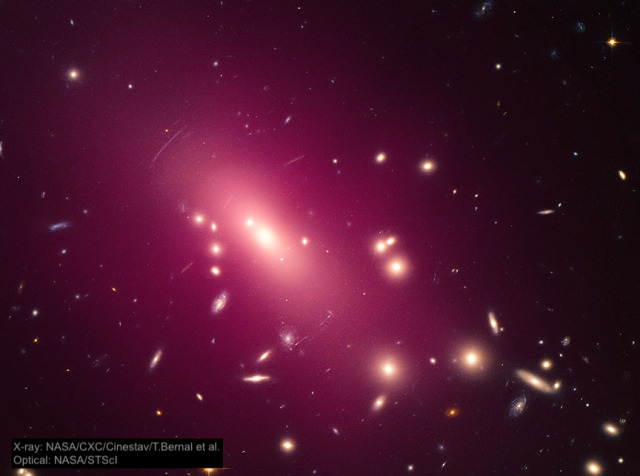If we could zoom waaaay out, we would see that galaxies and galaxy clusters make up large, fuzzy threads, like the strands of a giant cobweb. But we'll work our way out to that. First let's start at home and look at our planet's different cosmic communities.
Our home star system
Earth is one of eight planets — Mercury, Venus, Earth, Mars, Jupiter, Saturn, Uranus, and Neptune — that orbit the Sun. But our solar system is more than just planets; it also has a lot of smaller objects.
An asteroid belt circles the Sun between Mars and Jupiter. Beyond Neptune is a doughnut-shaped region of icy objects called the Kuiper Belt. This is where dwarf planets like Pluto and Makemake are found and is likely the source of short-period comets (like Haley’s comet), which orbit the Sun in less than 200 years.
Scientists think that even farther out lies the Oort Cloud, also a likely source of comets. This most distant region of our solar system is a giant spherical shell storing additional icy space debris the size of mountains, or larger! The outer edge of the Oort Cloud extends to about 1.5 light-years from the Sun — that’s the distance light travels in a year and a half (over 9 trillion miles).
Sometimes asteroids or comets get ejected from these regions and end up sharing an orbit with planets like Jupiter or even crossing Earth’s orbit. There are even interstellar objects that have entered the inner solar system from even farther than the Oort Cloud, perhaps coming all the way from another star!
Our home galaxy
Let's zoom out to look at the whole Milky Way galaxy, which contains more than 100 billion stars. Many are found in the galaxy’s disk — the pancake-shaped part of a spiral galaxy where the spiral arms lie. The brightest and most massive stars are found in the spiral arms, close to their birth places. Dimmer, less massive stars can be found sprinkled throughout the disk. Also found throughout the spiral arms are dense clouds of gas and dust called nebulae. The Sun lies in a small spiral arm called the Orion Spur.
The Milky Way’s disk is embedded in a spherical “halo” about 120,000 light-years across. The halo is dotted with globular clusters of old stars and filled with dark matter. Dark matter doesn’t emit enough light for us to directly detect it, but we know it’s there because without its mass our galaxy doesn’t have enough gravity to hold together!
Our galaxy also has several orbiting companion galaxies ranging from about 25,000 to 1.4 million light-years away. The best known of these are the Large and Small Magellanic Clouds, which are visible to the unaided eye from Earth’s Southern Hemisphere.
Our galactic neighborhood
The Milky Way and Andromeda, our nearest neighboring spiral galaxy, are just two members of a small group of galaxies called the Local Group. They and the other members of the group, 50 to 80 smaller galaxies, spread across about 10 million light-years.
The Local Group lies at the outskirts of an even larger structure. It is just one of at least 100 groups and clusters of galaxies that make up the Virgo Supercluster. This cluster of clusters spans about 110 million light-years!
Galaxies aren’t the only thing found in a galaxy cluster, though. We also find hot gas, as shown above in the bright X-ray light (in pink) that surrounds the galaxies (in optical light) of cluster Abell 1413, which is a picturesque member of a different supercluster. Plus, there is dark matter throughout the cluster that is only detectable through its gravitational interactions with other objects.
The Cosmic Web
The Virgo Supercluster is just one of many, many other groups of galaxies. But the universe’s structure is more than just galaxies, clusters, and the stuff contained within them.
For more than two decades, astronomers have been mapping out the locations of galaxies, revealing a filamentary, web-like structure. This large-scale backbone of the cosmos consists of dark matter laced with gas. Galaxies and clusters form along this structure, and there are large voids in between.
The scientific visualizations of this “cosmic web” look a little like a spider web, but that would be one colossal spider!
And there you have the different communities that define Earth’s place in the universe. Our tiny planet is a small speck on a crumb of that giant cosmic web!
https://bit.ly/3nJtP8O







Комментариев нет:
Отправить комментарий